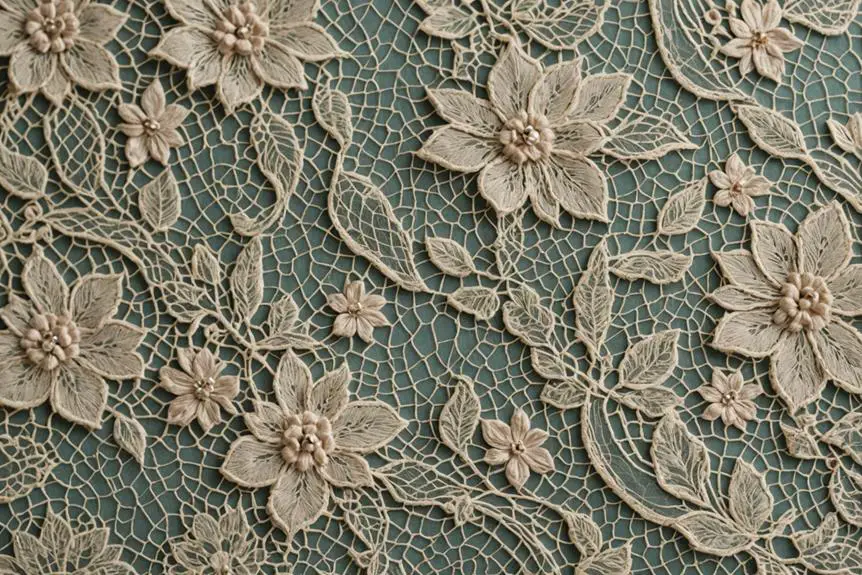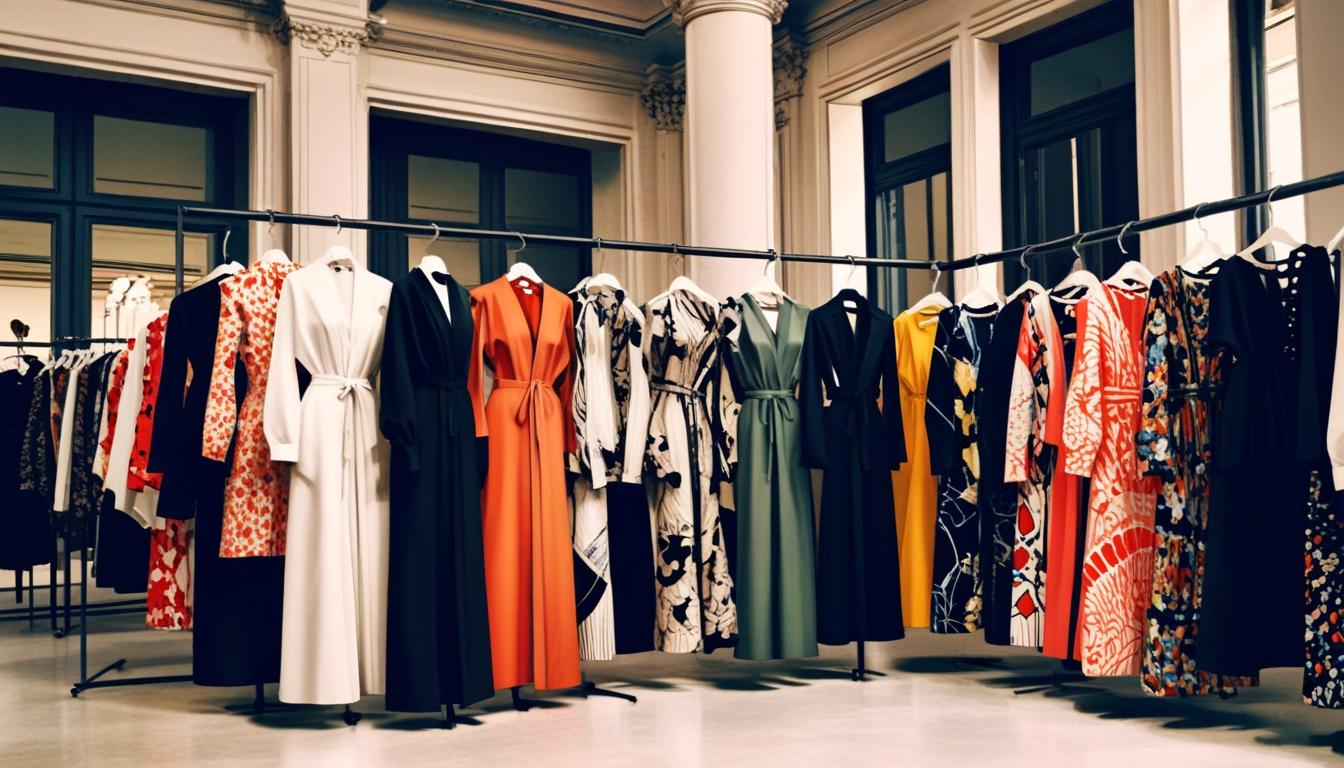In the 1920s, women's bobbed hair was all about breaking free from tradition, and the right accessories really made a statement! You couldn't go wrong with decorative hair combs, which added a touch of glam, or chic bandeaux that framed your face beautifully. Turbans were a fashionable way to rock that modern look too. Plus, as the decade rolled on, silk ribbons and feather clips became all the rage for a simpler vibe. It was all about mixing, matching, and showing off your unique style. Ready to explore more exciting trends from this fabulous era?
Reactions to Bobbed Hair
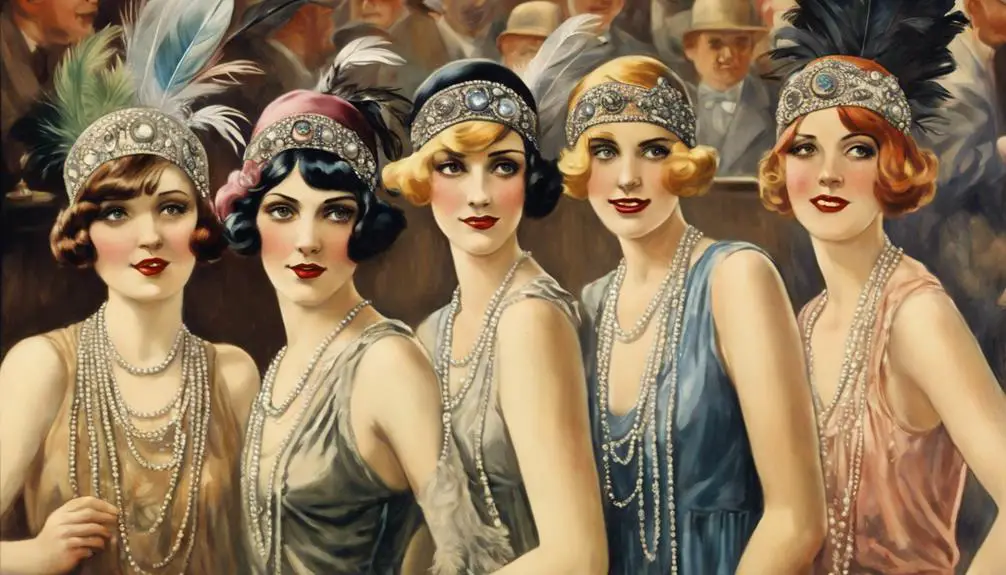
Many women faced mixed reactions when they embraced the bobbed hairstyle in the late 1910s and 1920s. You might think it was just a haircut, but it was way more than that! Bobbed hair symbolized a bold break from traditional femininity, shaking up the beauty standards of the time. Long hair was the norm, tied to the Victorian ideals of beauty and wealth. So, when women started cutting their hair short, it caused quite the stir!
Critics were everywhere, claiming bobbed hair was "not beautiful" and "too severe." Can you imagine? Beauty professionals were less than thrilled, showing a serious lack of enthusiasm for this trendy vintage hair. That backlash wasn't just about hair; it was about women's liberation. Short hair represented independence, a daring move away from expectations. But, oh boy, did society have something to say about it!
You could almost hear the gasps at social gatherings when a woman walked in with a chic bob. It became a hot topic, showcasing the tension between modernity and tradition. Some loved it, while others clutched their pearls in shock. Just think about the hair accessories that popped up to complement these new styles. From cute hats to sparkly clips, women had fun experimenting with their looks. It was all part of the excitement! So, whether you loved or hated it, the bobbed hairstyle was a big deal, shaking things up and redefining what it meant to be a woman in the 1920s.
Impact of Hair Magazines
Amid the whirlwind of changing beauty standards, hair magazines played an essential role in shaping perceptions of bobbed hairstyles. At first, these magazines weren't too keen on the trend. In a 1924 issue of *The American Hairdresser*, they called bobbed hairstyles "not beautiful" and "too severe." Ouch! That's a pretty harsh critique, especially when women were rocking those chic cuts as symbols of women's liberation and the flapper movement.
But here's the twist: as the 1920s rolled on, bobbed hairstyles started to gain acceptance. Even though hair magazines initially resisted, they couldn't ignore the buzz. Women wanted short hair, and they weren't backing down! This new style represented a shift from traditional beauty standards to something daring and modern. Can you imagine how exciting that must've felt for women at the time?
As the flapper movement surged, hair magazines began to reflect these changing attitudes. They started showcasing vintage-inspired bobbed hairstyles, highlighting their connection to independence and fun. The portrayal of bobbed hair in beauty publications mirrored societal tensions, as short hair became increasingly seen as a mark of modernity.
Popular Bobbed Hairstyle Names
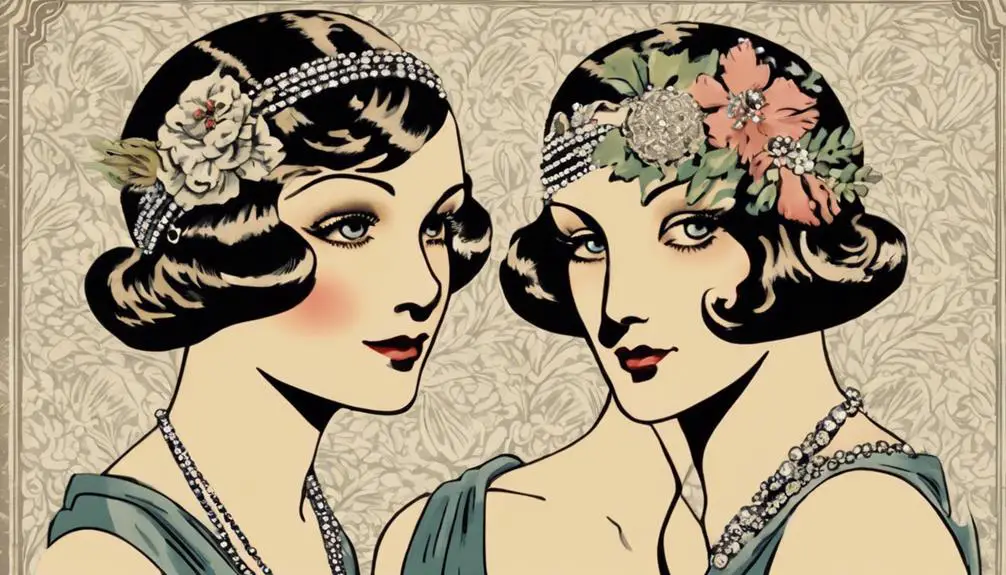
Bobbed hairstyles have consistently captured the hearts of fashion-forward women since their inception. If you're diving into the world of bobbed cuts, you'll find a treasure trove of popular hairstyles that defined the 1920s. Take the Shingle Bob, for instance. This layered style, made famous by actress Ina Claire, is a classic choice for a chic look. Or how about the Permanently Waved Bob? It introduced lovely waves that added a fun texture to your bobbed cut, making it even more eye-catching.
Then there's the Boyish Bob, ideal for those who want to break free from traditional femininity. This short, androgynous style became a go-to for women embracing modernity. Don't forget about the Dutch Cut or the Horizontal Clubbed Bob—both showcase how versatile bobbed hairstyles can be, adapting beautifully to different face shapes.
Of course, the Flapper Bob and Center Part Bob are must-tries. These styles not only reflect the fashionable trends of the flapper movement but also embody the spirit of women's liberation. To complete your look, think about popular hair accessories like cute hair clips and vintage combs. They're perfect for adding a little flair to your hairstyle! So, which bobbed hairstyle are you going to rock? With so many fabulous options, you might just want to try them all!
Key Hair Accessories of the 1920s
The 1920s brought a dazzling array of hair accessories that transformed bobbed hairstyles into true statements of style. If you rocked a bobbed hairstyle, you know it wasn't just about the cut; it was all about the hair accessories, too! Decorative hair combs were a must-have. These vintage beauties added flair and kept your hair in place. Picture tiny combs adorned with rhinestones, sparkling like the night sky—who wouldn't want those in their hair?
Bandeaux were another popular choice, worn across your forehead or at the back of your head. They framed your face perfectly and added a touch of elegance. And let's not forget about turbans! These stylish accessories not only showcased the era's fashion but also complemented short hairstyles beautifully.
As the mid to late 1920s rolled in, simplicity started to take over. Evening looks became more streamlined, which meant silk ribbons and feather clips were all the rage. But don't worry, vintage hair accessories were still in style, especially those with Art Deco designs.
Why not mix and match? You could layer a decorative hair comb with a ribbon for that extra pop! It was all about expressing yourself and having fun with your look. So, whether you were heading to a jazz club or a speakeasy, these hair accessories were your best friends in the roaring twenties!
Cultural Significance of Bobbed Hair
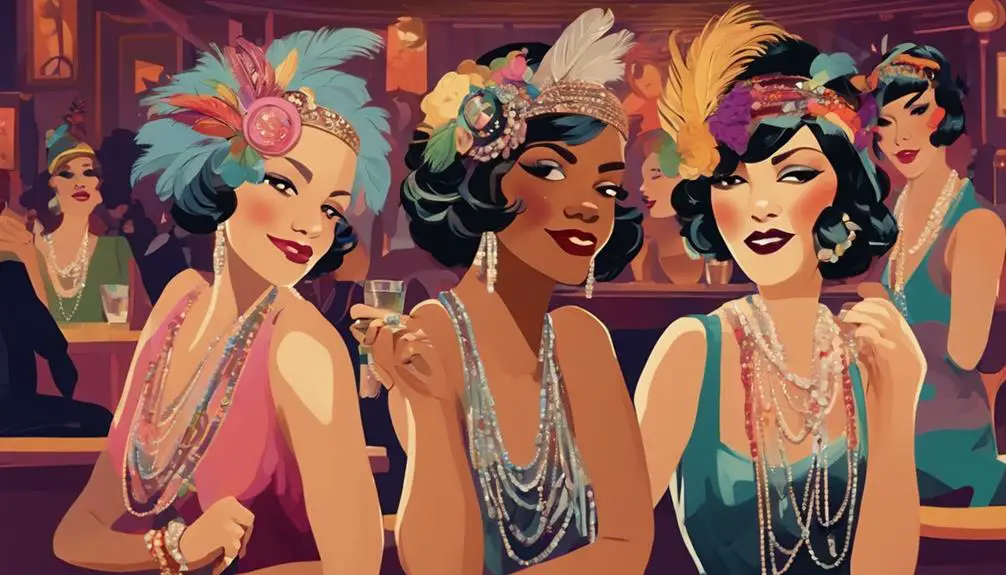
Freedom defined the cultural significance of bobbed hair in the 1920s, marking a bold shift in women's identity and societal roles. Imagine stepping out of the house with a fresh bob, feeling like you just broke free from years of tradition! Bobbed hair wasn't just a hairstyle—it symbolized women's liberation. It was all about breaking away from those old-fashioned beauty standards that said long hair was the only way to be feminine.
The bob hairstyle was closely linked to the flapper movement, which celebrated modernity and self-expression. Women wanted to be seen as individuals, not just someone's wife or daughter. They wanted to dance, drink, and live life on their terms! And boy, did the bob stir up strong reactions. Some viewed it as rebellious, a challenge to those stuffy Victorian ideals of beauty. Yet, others saw it as a fresh and exciting trend.
Stars like Clara Bow and Gloria Swanson rocked the bob, making it a symbol of empowerment. By the mid-1920s, bobbed hair was everywhere, influencing fashion and beauty standards. Still, it sparked polarized opinions—some loved it, while others were horrified! Isn't it fascinating how a simple haircut could represent such a huge cultural shift? Bobbed hair wasn't just about looking good; it was about embracing your freedom and individuality. So, if you ever think about trying a bob, remember: it's not just a hairstyle; it's a statement!
Frequently Asked Questions
Why Was Having a Bobbed Haircut in the 1920S Such a Big Deal?
Having a bobbed haircut in the 1920s was a big deal because it symbolized social liberation, served as a bold fashion statement, reflected a cultural revolution, and challenged gender identity, embodying youth rebellion and modernity.
Why Did Flappers Wear Bobs?
Flappers wore bobs as a powerful fashion statement, embracing flapper identity and symbolizing women's liberation. This hairstyle represented social rebellion against traditional norms, reflecting the cultural shift towards modernity and self-expression during the 1920s.
What to Wear With Bobbed Hair?
When you've got bobbed hair, try pairing it with chic hair clips or trendy headbands styles. Vintage scarves add flair, while perfect jewelry combinations and current makeup trends enhance your overall outfit coordination effortlessly.
What Is a Castle Clip Haircut?
The Castle Clip haircut features sleek, short styles with longer front sections. You'll love its elegance and versatility. Maintaining it involves regular trims, while variations showcase different materials and reflect its significant influence on fashion history.



